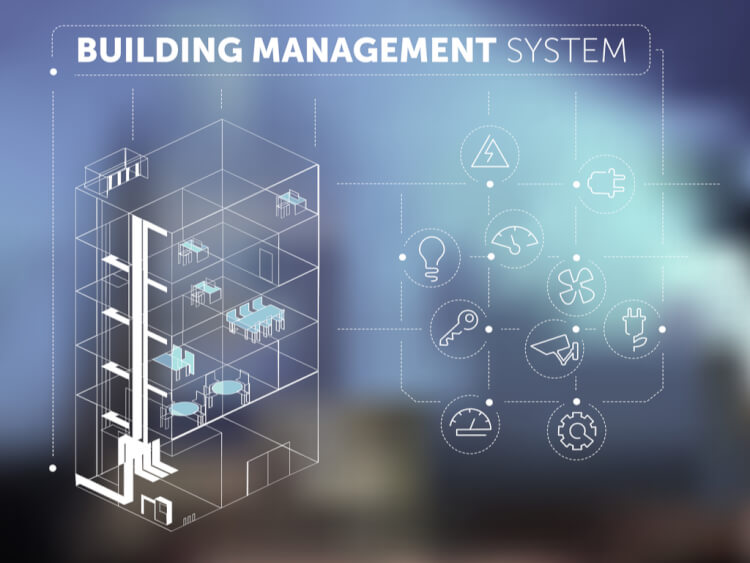
Table of contents
- What is a “building management system”?
- Functional features of “Building Management System”
- Cooperation with cloud services
- Monitor from anywhere
- Centrally manage building equipment at multiple locations
- Remotely monitor and control
- Glossary of terms related to building management systems
- summary
What is a “building management system”?
A building management system refers to a system that monitors and controls various facilities such as electricity, air conditioning, lighting, disaster prevention, and crime prevention in a building. In buildings such as office buildings, in order to maintain a comfortable and safe environment, it is necessary to constantly check for any abnormalities. However, if such work is performed by humans, the workload will increase.
If you install a building management system, you can automatically manage the inside of your building 24 hours a day. Since constant checks are carried out, the burden of equipment inspection and patrol work by workers can be reduced, and the aim is to improve the efficiency of supervisory work. In the unlikely event that an abnormal situation is detected, the system shares the information with the administrator, and can respond quickly by dispatching security guards or workers as necessary.
Functional features of “Building Management System”
From here, we will introduce the functional characteristics of building management systems in detail.
Cooperation with cloud services
By linking cloud services and management systems, necessary functions can be added later depending on the building situation and management needs. Various building management system functions, such as energy saving measures and air conditioning control, will be added to the system, making it even more convenient to use.
In addition, with cloud services, there is no need to build hardware such as servers or install dedicated software to utilize the cloud. Therefore, a major appeal is that not only initial costs such as construction costs but also running costs such as maintenance costs can be reduced. Even if you find it troublesome to go to the trouble of building a server, you can reduce your worries about the hassle and cost by introducing a management system that utilizes the cloud.
Monitor from anywhere
You can check the management status from anywhere using a tablet or other device via the Internet or wireless LAN. The advantage is that the building can be managed without the need for a manager to be present all the time, and even if an abnormal situation occurs, the situation can be checked on a tablet or other device.
Centrally manage building equipment at multiple locations
Companies with multiple management bases, such as branches, must manage each building, but by introducing a management system, it becomes possible to centrally manage multiple buildings. You will be able to smoothly check the amount of electricity consumed by each building.
The ability to centralize this type of management has the advantage of making building management easier. By making settings in advance to send an email to the administrator or display a warning on the monitor screen when an abnormality such as a malfunction is detected, you will be able to respond immediately when an abnormal situation occurs.
Remotely monitor and control
Building managers can perform monitoring and control settings even when they are away from the building. This allows safe building management without the need for a permanent administrator. You can also set automatic equipment control using schedule control, power demand control, etc.
Glossary of terms related to building management systems
Next, we will introduce some important terms in building management systems.
- B.A.S.
An abbreviation for “Building Automation System,” which refers to a system that manages equipment in a building, including the regulation of air conditioning and electricity, using a variety of functions such as monitoring and operation control functions.
- D.D.C.
It is an abbreviation for “Direct Digital Controller” and its main role is to control air conditioning equipment such as air conditioners. It is characterized by the fact that even complex controls function as configured.
- INV
It is an abbreviation of “Inverter”, which includes the meaning of a power supply circuit and a device that includes that circuit. You can change the rotation speed of the electric motor.
- VAV
Abbreviation for “Var iable Air Volume”. The VAV method refers to an air conditioning method that changes the amount of air sent into the room from the air conditioner based on information sent from the room temperature setting device. By using the VAV method, you can compare the airflow detected by the sensor with the set airflow and adjust it to the appropriate airflow. This function not only allows the air conditioner to emit an appropriate amount of air, but also maintains an appropriate room temperature.
- PID control
It is a type of feedback control and is so named because it consists of three elements: P action, I action, and D action. In actual management, there are many controls that do not use D operations, but air conditioning controls such as temperature adjustment are often performed using this control method.
- M&V
Abbreviation for “Measurement and Verification.” This refers to a method for evaluating the effectiveness of energy-saving renovation work. In the ESCO business, which supports energy conservation and receives part of the cost savings as compensation, the U.S. Department of Energy has established the IPMVP (International Performance Measurement and Verification Protocol) as a method for measuring energy conservation effects. .
summary
Introducing a building management system like this can be expected to reduce the burden on managers. Not only can you check the situation inside a building from anywhere, but you can also centrally manage multiple buildings and operate them remotely. If you want to reduce management effort and costs, why not consider introducing a system?
